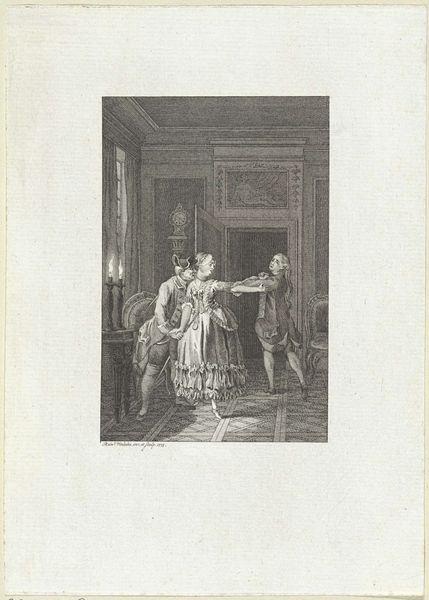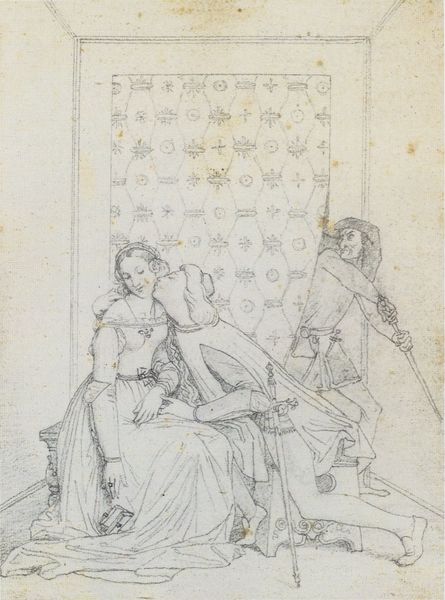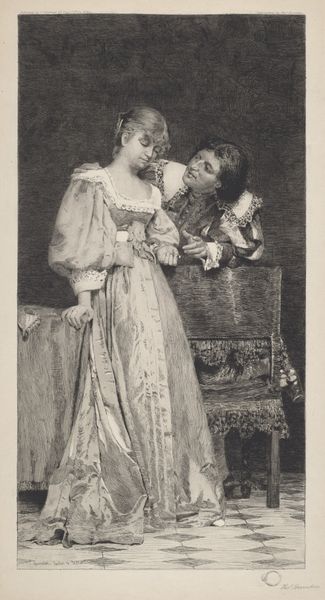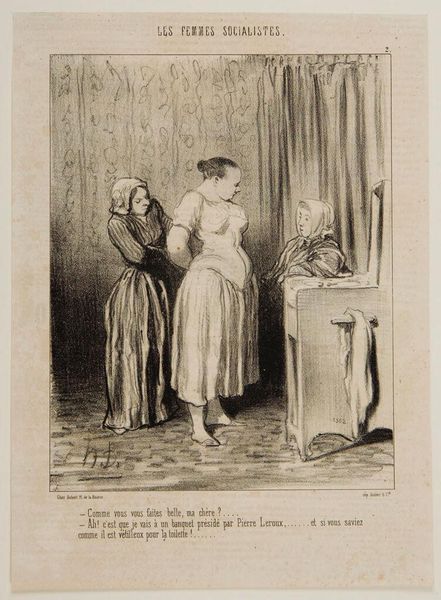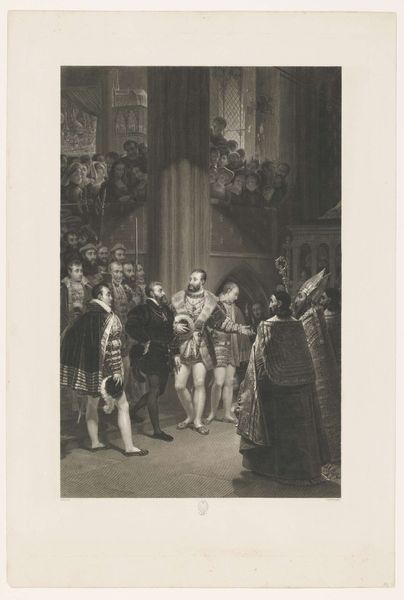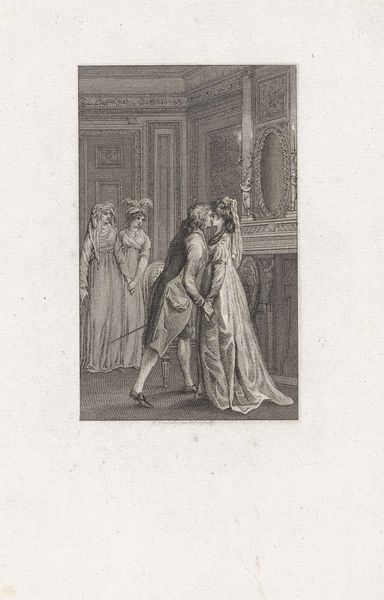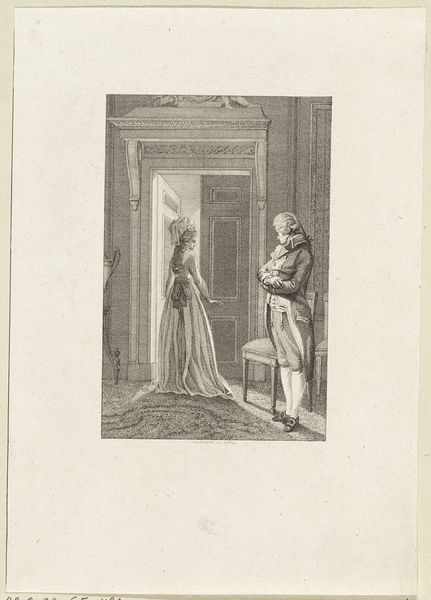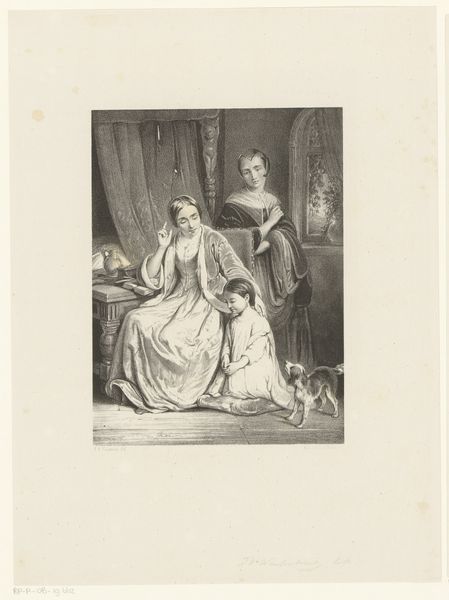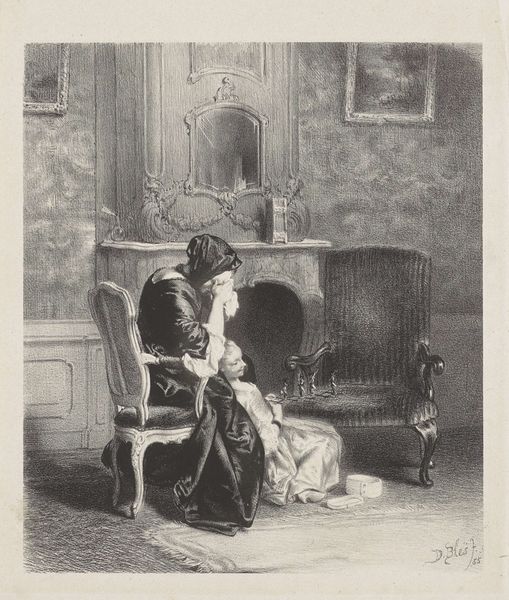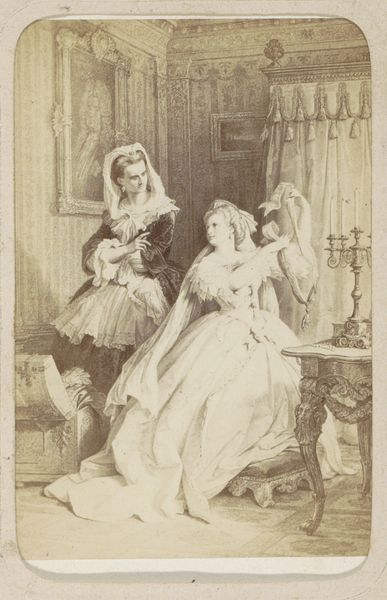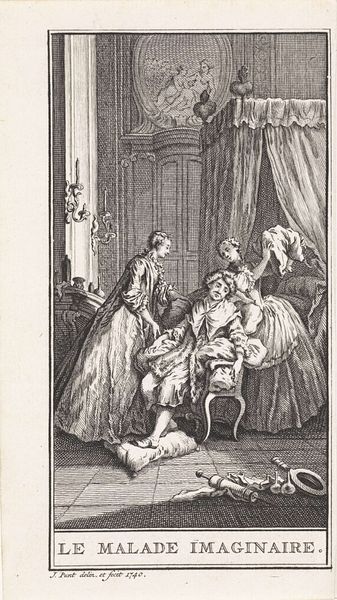
Dimensions: height 150 mm, width 96 mm
Copyright: Rijks Museum: Open Domain
Curator: This print by Willem Steelink, titled "Louise de Colligny met Frederik Hendrik bij het portret van Willem I", dating back to 1867, depicts a scene imbued with a kind of reserved, almost mournful, sentiment. The monochromatic palette certainly contributes to this effect. Editor: Absolutely. The stark contrast emphasizes the emotional weight of the moment captured here. Before diving deeper into the symbolism and narrative, it’s crucial to consider the printmaking process itself, particularly engraving. Curator: Indeed. Steelink’s masterful use of engraving to render such minute details would be crucial to any comprehensive understanding of this artwork, the transfer of an image, and ultimately making art more readily available. Engraving was an intricate and labour-intensive process—its significance often overshadowed in favour of the final product. This piece underscores its social reach and impact. Editor: Yet within that reproducible medium, the composition remains captivating. Note the careful arrangement of figures within the domestic space. Louise de Colligny sits regally, while Frederik Hendrik gazes, almost wistfully, towards the portrait of Willem I, an interplay which surely holds particular meanings to them. The material presence of the sumptuous robes discarded on the floor hints at a story untold. The textures, meticulously rendered, evoke a sense of weight and opulence. Curator: Precisely. We must not forget how the historical context in which this work was made, with its prevailing romanticism, contributed to the narrative of national identity and heroic leadership—specifically focusing on images depicting historical moments within the newly formed nation. The materials utilized become conveyors of these ideals. How did the process, production and consumption of this type of image reflect on contemporary concerns? Editor: I agree, and might add that Steelink cleverly utilizes the inherent flatness of the print medium to emphasize the symbolic weight of the represented history itself. The subjects within this staged encounter are consciously crafted, so we read beyond its historical nature. The details around each individual lead to questions. Why this moment in the lives of the depicted? What emotional purpose did Steelink try to elicit? Curator: It seems there are questions in all aspects for us to continue seeking answers to. Editor: I agree, from the symbolism to the process and place this print holds within history; it's a very compelling study.
Comments
No comments
Be the first to comment and join the conversation on the ultimate creative platform.
